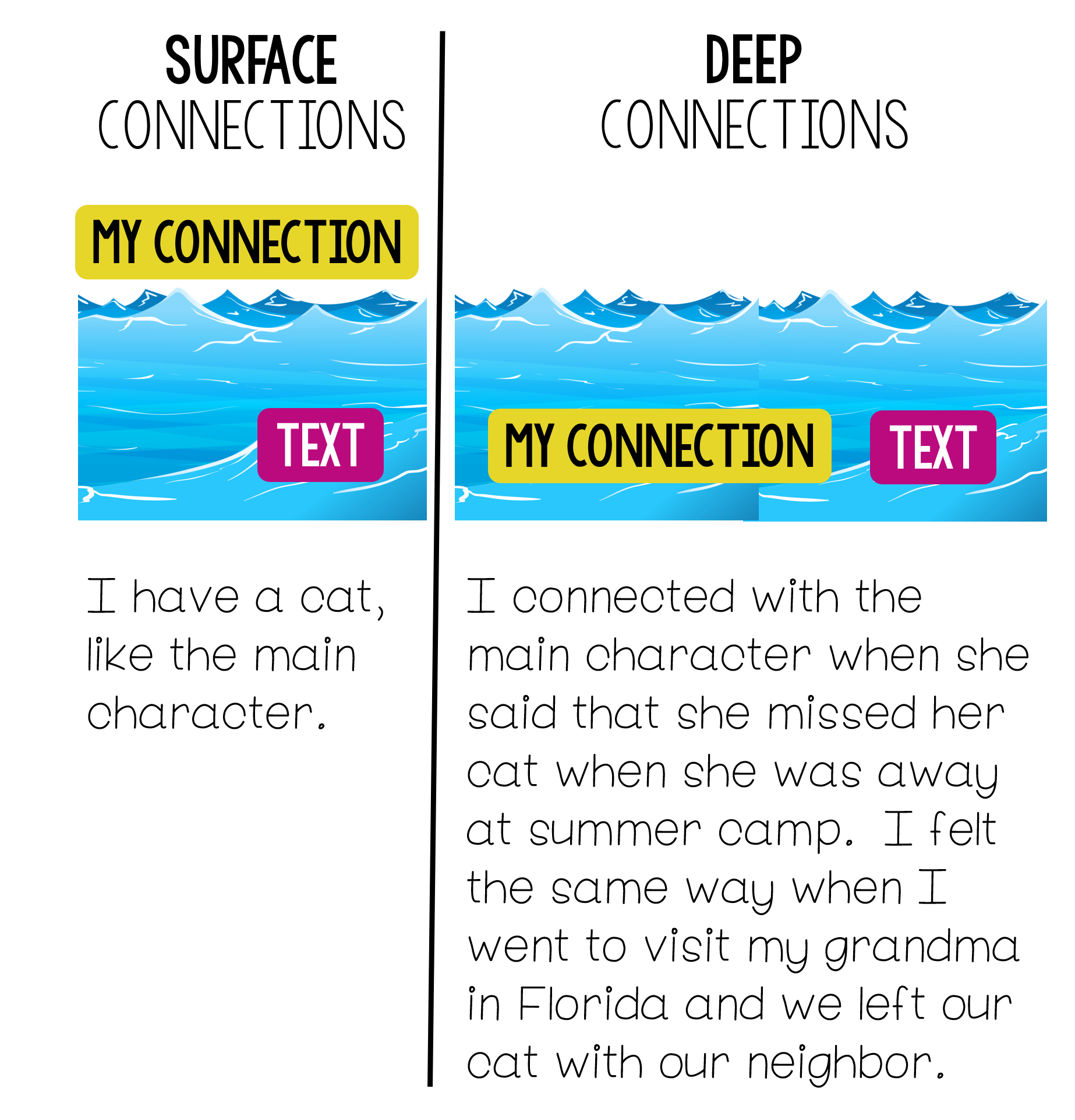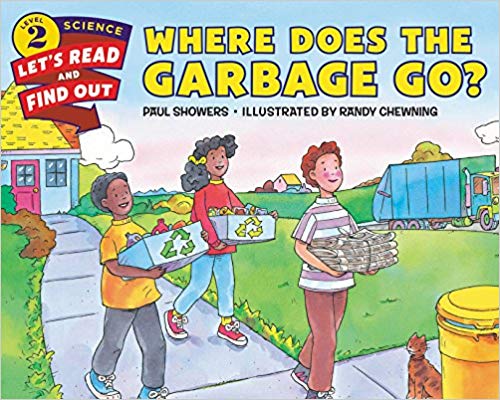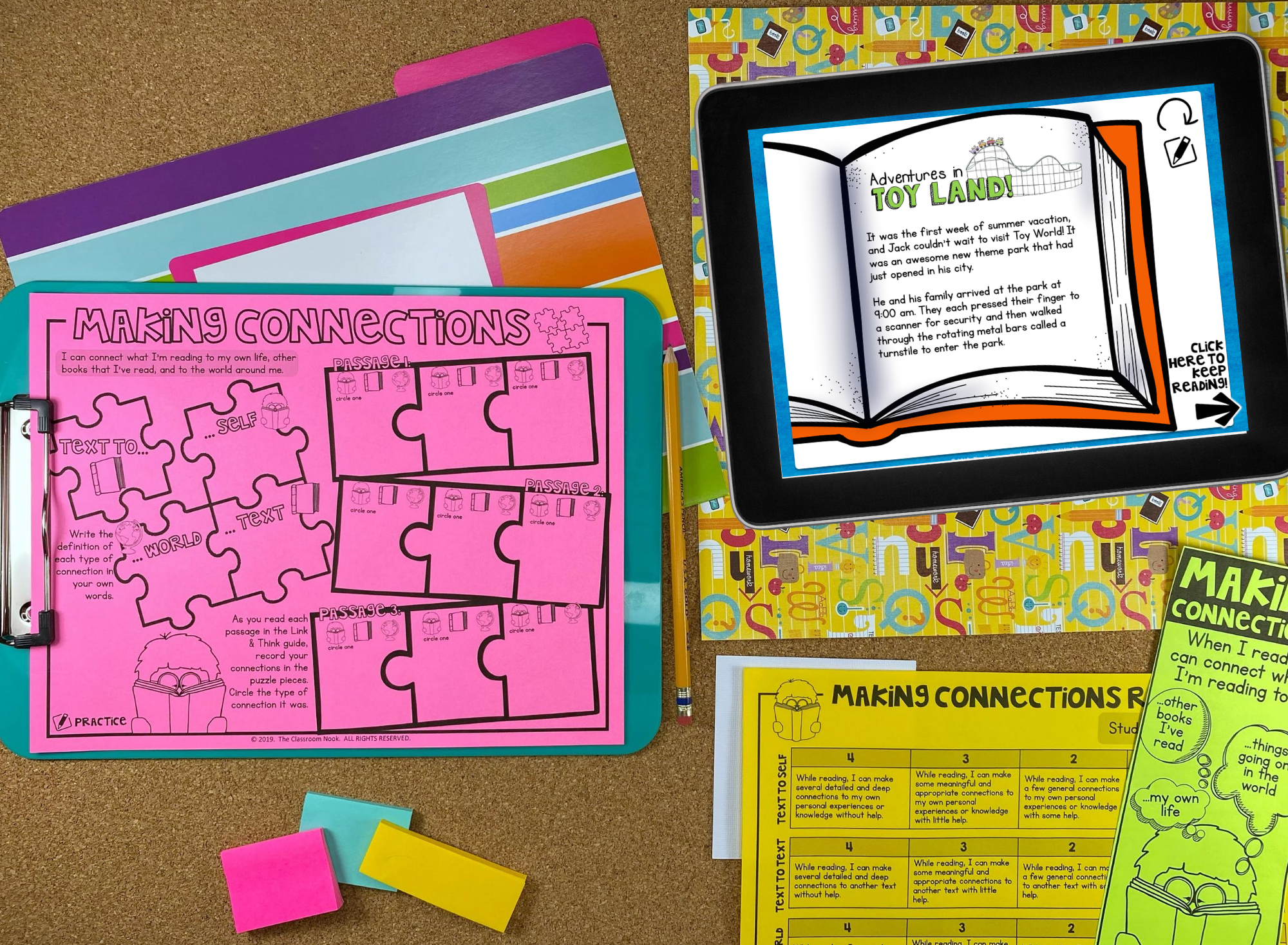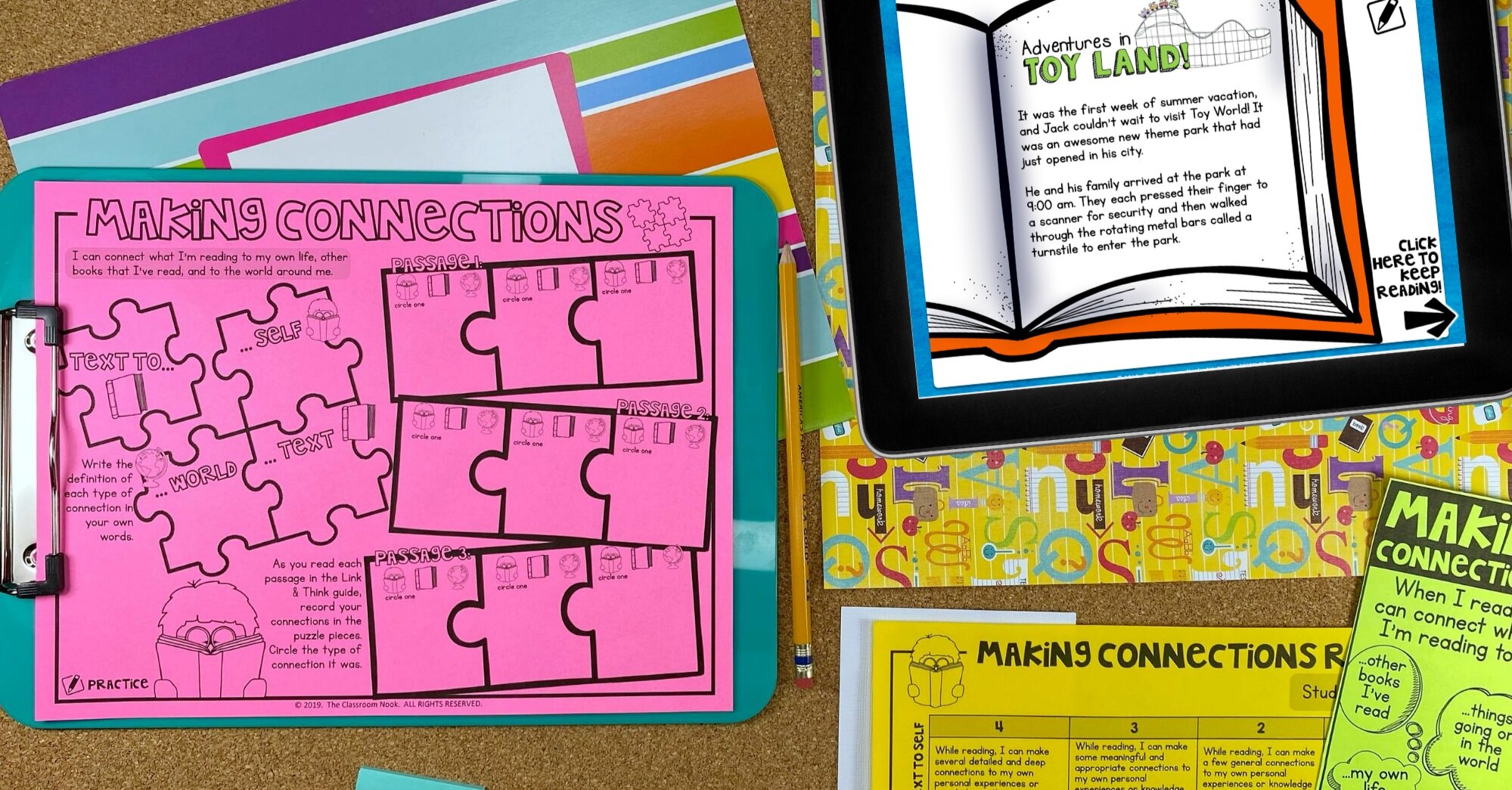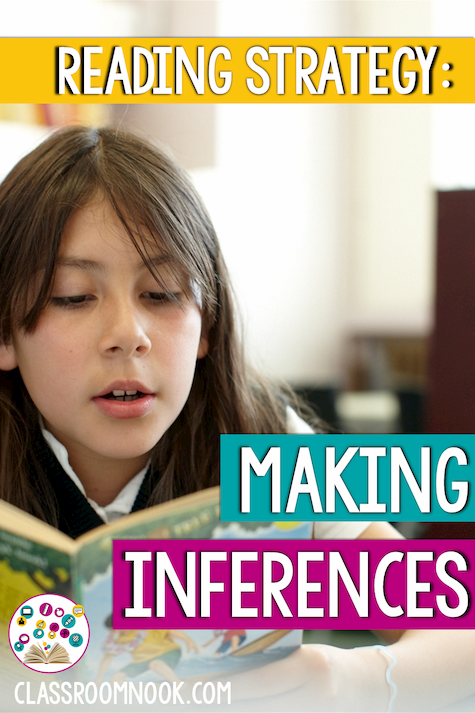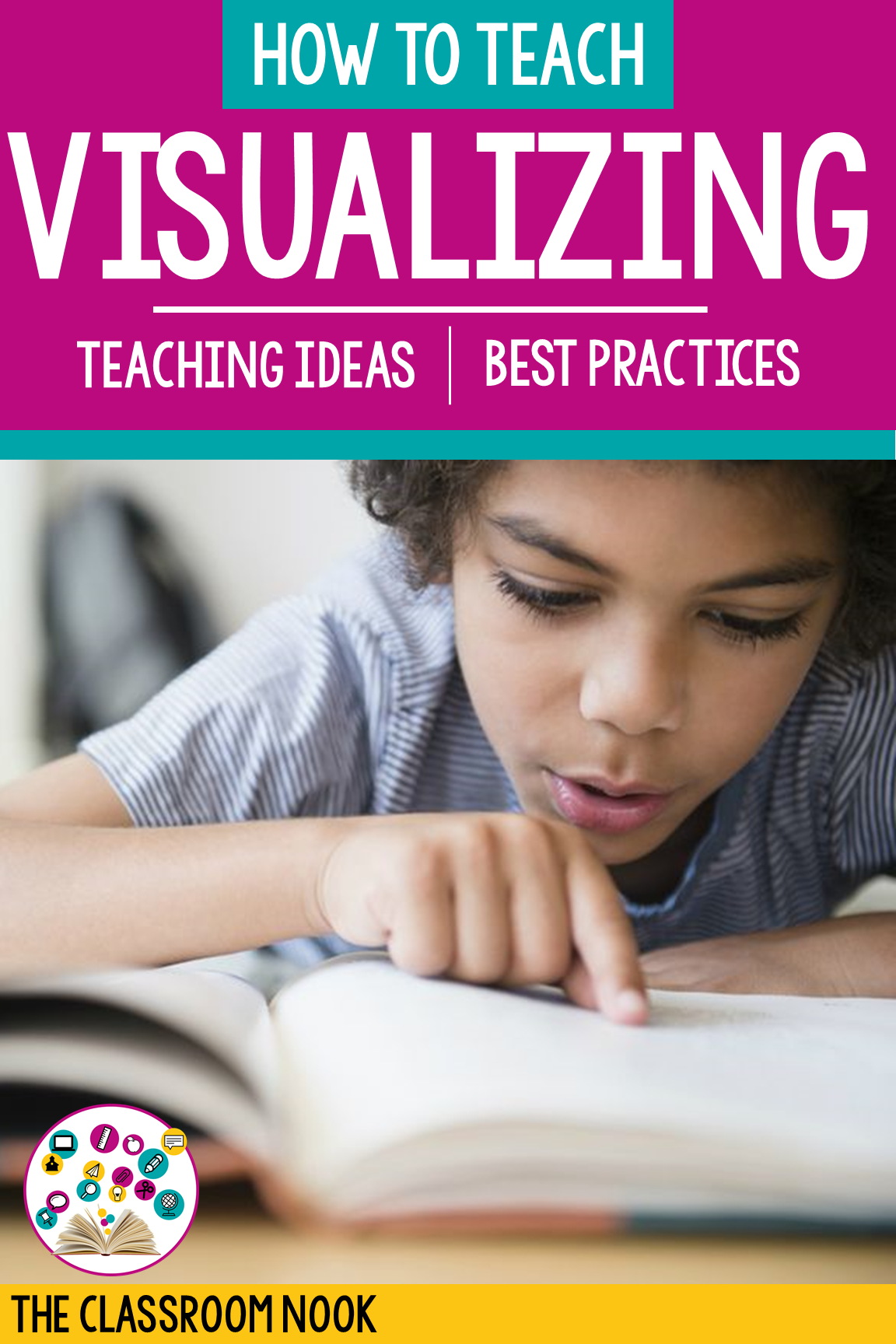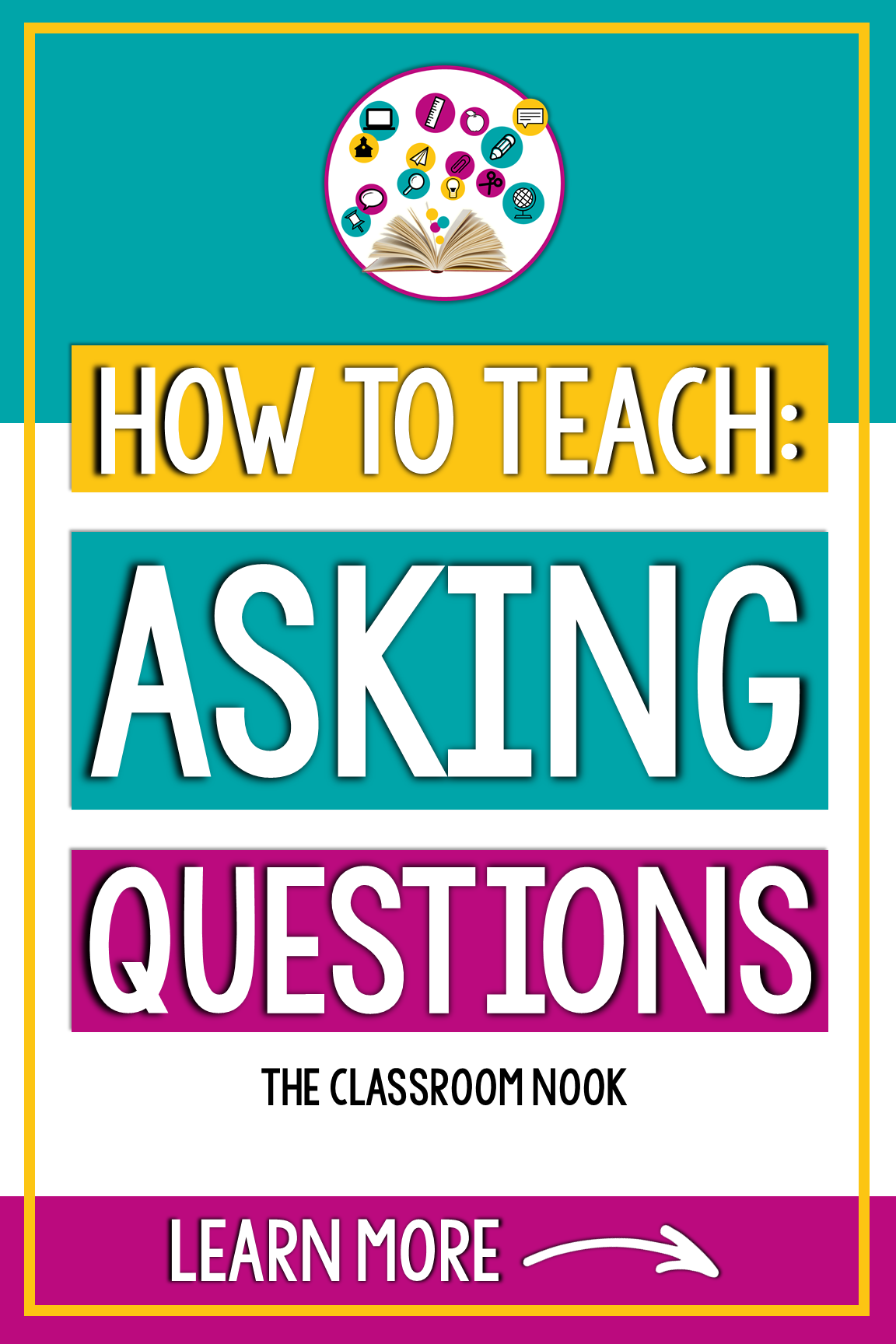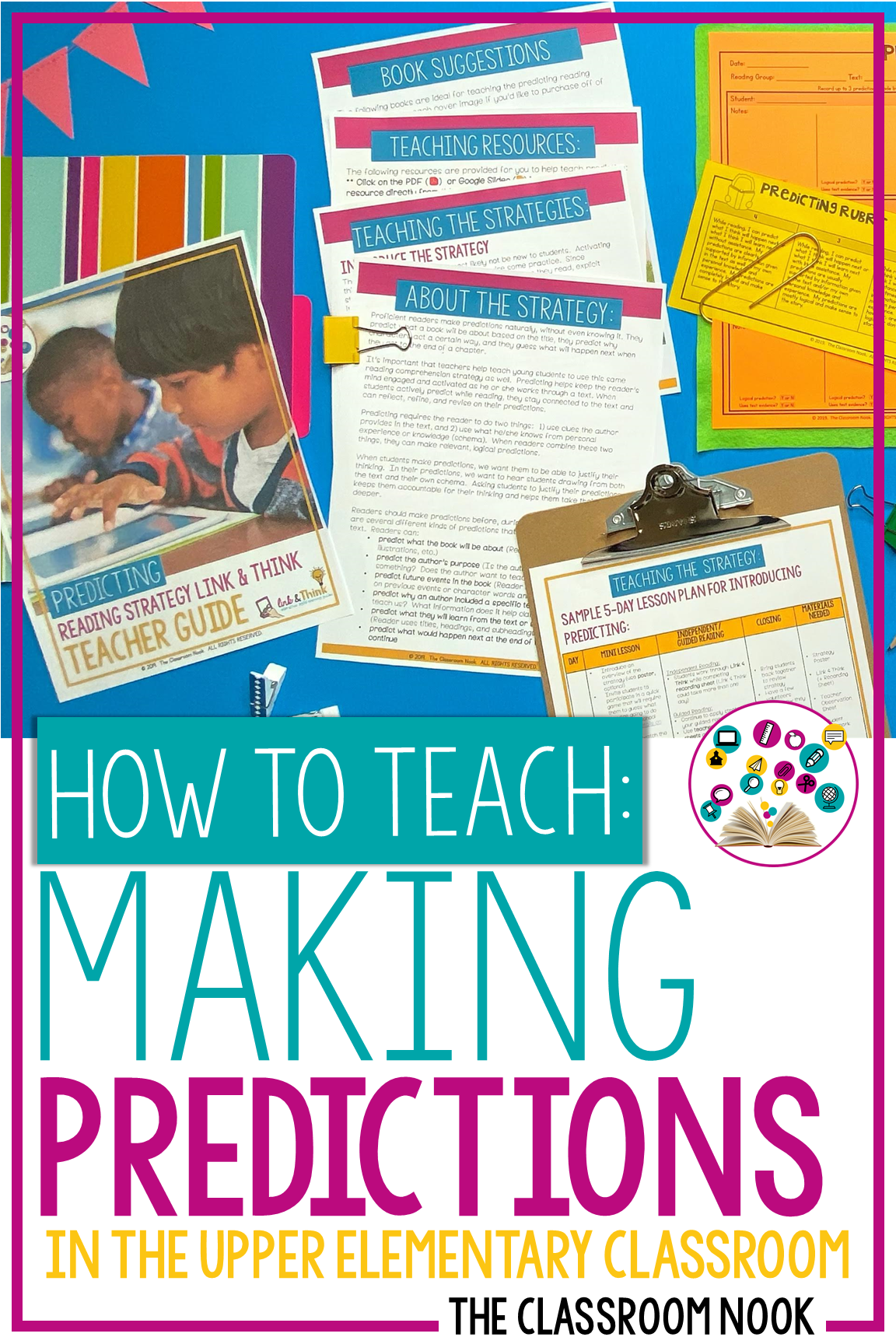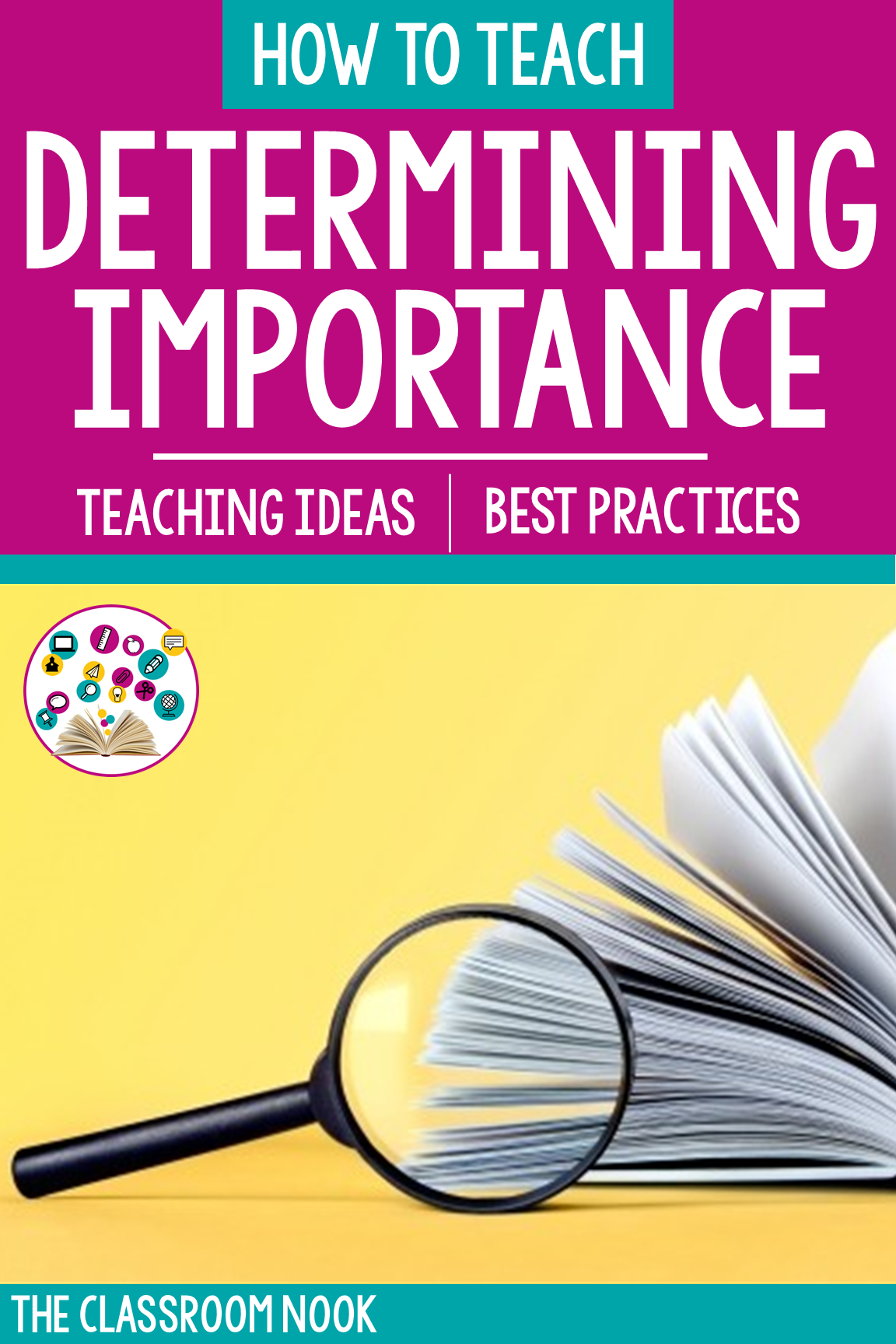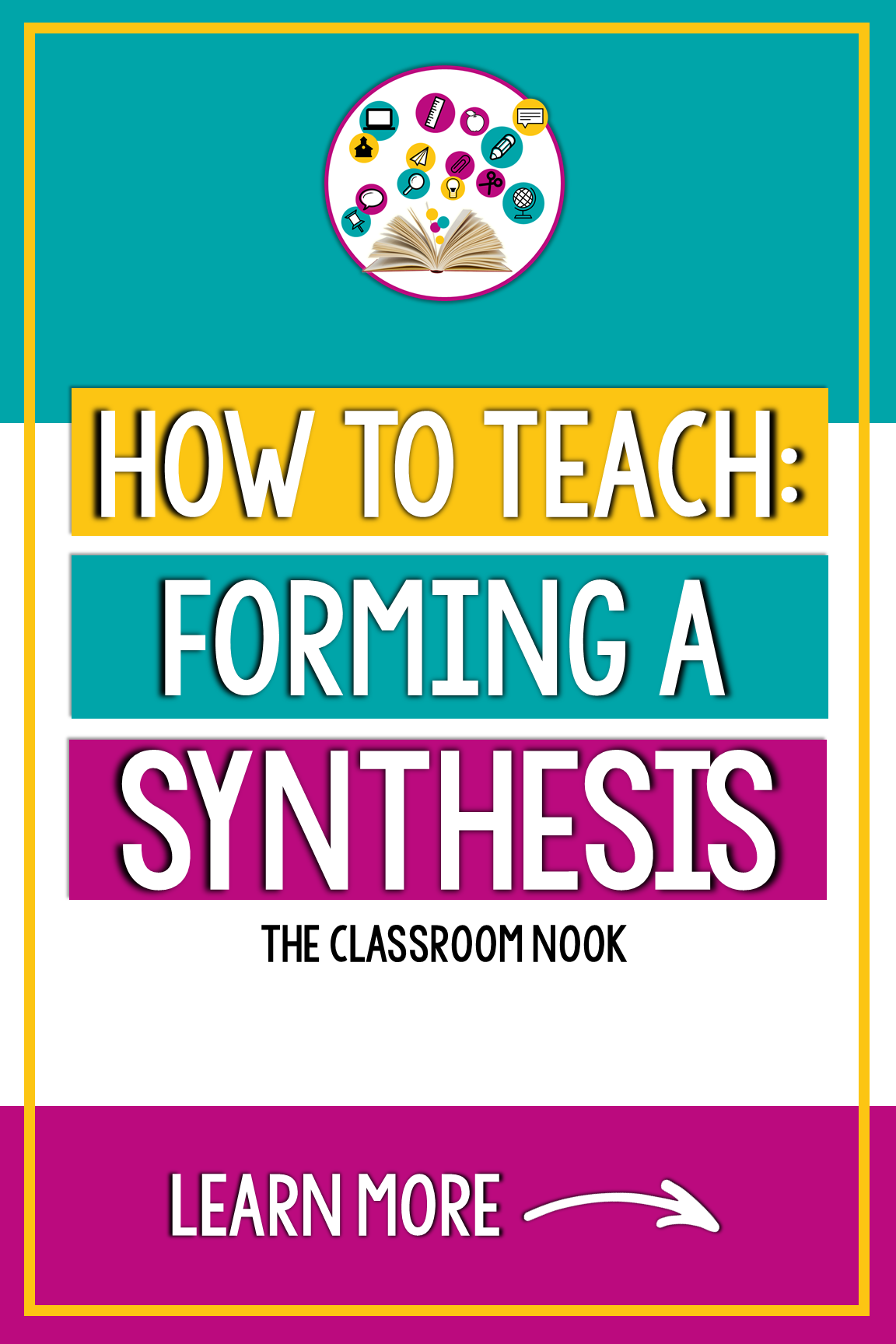Reading Comprehension Strategy Series: How To Teach Making Connections in the Upper Elementary Classroom
Love podcasts? Check out this post in the form of a podcast episode on The Classroom Commute Podcast:
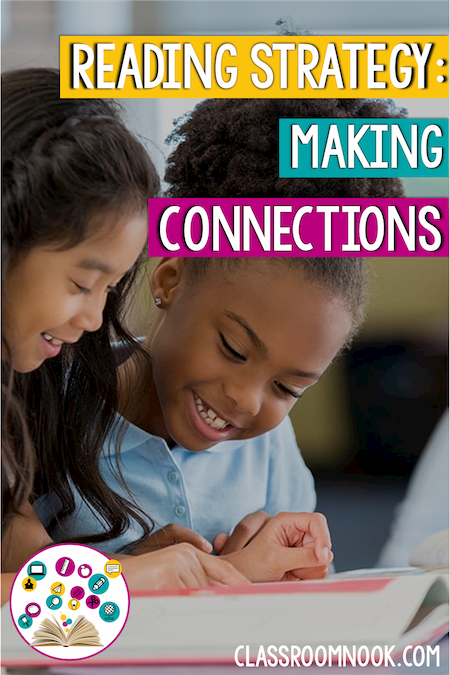
Teachers know that reading doesn’t just consist of reading the words on the page. Comprehension doesn’t just magically happen. In fact, experts have come to agree that for real comprehension to take place, readers use one or more strategies to aid in their comprehension of a text. These strategies include: Making Connections, Asking Questions, Visualizing, Predicting, Inferring, Determining Importance, and Synthesizing
As seasoned readers, adults use these reading strategies without much effort, but young readers need to be explicitly taught what these strategies are and how to use them. Overtime, readers will learn to weave in and out of these strategies to fully comprehend the text that they read.
At the upper elementary level, students have likely been introduced to all 7 of these reading strategies, but they still need isolated instruction on each strategy throughout the school year. Of course, once a strategy is taught, it needs to be reviewed, retaught, and continuously practiced.
Many teachers would agree that making connections is one of the easiest strategies for students to master simply because students are likely already doing it without much effort. In this post, I will walk you though the basics of what the strategy is and how to effectively teach it to your students
Pssst…Want a super engaging and interactive way to have students practice making connections?
LINKtivity® Interactive Guides are EXACTLY what you need to make learning fun & accessible for all!
Get access to the Making Connections LINKtivity® (+a growing library of LINKtivities!) inside of LINKtivity® Learning - an all-access pass to our entire vault of LINKtivities!
Below are the different categories within this post to help you jump to exactly what you need! Click on each category title to navigate there directly:
what you need to know before teaching the MAKING CONNECTIONS reading strategy:
Making connections is a critical reading comprehension strategy that helps students make meaning of what they are reading. When students make connections to the texts that they are reading, it helps them to make sense of what they read, retain the information better, and engage more with the text itself.
Students can make connections between:
the text and themselves
the text and another text
the text and the world around them
TEXT-TO-SELF CONNECTIONS:
These are connections where students connect what they are reading to personal experiences or knowledge. Students with a wide range of experiences will often be able to make more insightful and complex connections. Students with more limited experiences may struggle to make connections or create vague, general connections.
Example of Text to Self: “This story reminds me of a vacation that I took to the ocean, just like the main character.”
TEXT-TO-TEXT CONNECTIONS
These connections are made when a student can connect what they are reading to other books that they have read or listened to before. They may make connections that show how the books share the same author, have similar characters, events, or settings, are the same genre, or are on the same topic. A solid text to text connection occurs when a student is able to apply what they’ve read from one text to another text.
Example of Text to Text: “I read another book about spiders that explained that spiders have venom and in this book, I am learning about the top 10 dangerous spiders of the world.”
TEXT-TO-WORLD CONNECTIONS
These are connections where students connect what they are reading to real events (past of present), social issues, other people, and happenings going on in the world. Students learn about the world from what they hear on TV, movies, magazines, and newspapers. Effective text to world connections happen when students can use what they have learned through these mediums to enhance their understanding of the text that they are reading.
Example of Text to World: “I saw on the news about how water pollution was affecting marine animals, and in this book I am learning about why pollution can make a marine animal sick.
All three of these connections are most meaningful and effective when students are able to make deep, complex, and insightful connections to the text, rather than vague, general, or superficial connections.
MODELING MAKING CONNECTIONS
Although many students find making connections an easier strategy to master than some others, it does not always come naturally to all students, especially those with limited experiences. Therefore, you will need to spend time modeling the use of each type of connection through read aloud texts and written responses.
Typically, the easiest type of connection for most students to make is the text-to-self connection. Start by using read-aloud texts that you are confident most, if not all students will be able to have some sort of connection with. Model your own connections and invite others to share theirs. Discuss the difference between deep connections, and surface connections. The graphic on the right provides an example of what this might look like.
Using a variety of prompts to guide students in making text to self connections can help focus a student’s thought process or help struggling students. These prompts work great when making both oral and written connections:
What does this remind me of in my life?
How is this similar to my life?
How is this different from my life?
Has something like this ever happened to me?
How does this relate to my life?
What were my feelings when I read this?
Text-to-text connections are the second type of connection that most teachers choose to teach. Choose two texts that you know students will be able to easily identify similar topics, characters, or events. For example, you might read a book about a specific topic, and then a fiction poem on the same topic. Plan out the connections that you’d like to model for you students ahead of time. Use the following prompts to help guide students:
What does this remind me of in another book I’ve read?
How is this text similar to other things I’ve read?
How is this different from other books I’ve read?
Have I read about something like this before?
The most challenging connection to teach is text-to-world connections. Choose books that have characters or are about topics that will easily lend itself to text-to-world connections. For example, the book Where Does Garbage Go? (view here) would be an easy book for students to connect to a world issue. You can discuss the importance of earth conservation, discuss concerns such water pollution…etc. Use the following prompts to help guide students in text-to-world connections:
What does this remind me of in the real world?
How is this text similar to things that happen in the real world?
How is this different from things that happen in the real world?
How did that part relate to the world around me?
CHOOSE TEXTS THAT ASSIST IN MAKING CONNECTIONS:
As you will come to see, there are some texts that work better than others for teaching different reading strategies. Of course we want our students to be able to make connections no matter what they are reading, but when they are first learning, it helps to pre-select texts that you know will support students best in making connections. Consider making a special book bin in your classroom with the following titles for students to choose from. You can also use these books for read-alouds, partner reading or even in small groups.
(Click on any title to purchase off Amazon (affiliate links))
Books for Teaching Text-to-Self:
Books for Teaching Text-to-Text:
Books for Teaching Text-to-World
PRACTICING MAKING CONNECTIONS:
CREATE SIMPLE VISUALS TO REMIND STUDENTS TO MAKE CONNECTIONS:
Students will need ample time to practice this strategy with you in guided reading or strategy groups as well as with their independent books. When first practicing the strategy on their own, it helps for students to have a simple reminder of the strategy in front of them while they are reading in both small groups as well as individually.
Something as simple as a bookmark that students can refer to while they read is the perfect friendly reminder to make connections while they read.
8 free Reading Strategy bookmark!
Grab these FREE student bookmarks to help your students use reading comprehension strategies while reading.
There are a total of 8 bookmarks that explain reading strategy in kid-friendly language and is the perfect reference for students to use during independent or small-group reading time.
In addition to personal reminders, Be sure to create anchor charts with your students or place up posters for students to refer to while learning this strategy. The visuals of the posters and/or anchor charts along with a students bookmark or something similar will help to keep the reading strategy top of mind.
You May Also Like to Read: 10 ANCHOR CHARTS TO TEACH STUDENTS TO MAKE CONNECTIONS
USE DIGITAL LINKtivity® INTERACTIVE LEARNING GUIDES
If you’ve been with me for a while, then you know my go-to method to teaching new content to students is LINKtivities! They work great for individual practice and even for centers. In the making connections LINKtivity, students learn this reading strategy in a variety of ways. Watch the video below for a sneak-peek!
Here’s how it works:
First, students watch a short animated video clip that quickly catches their attention with fun doodles and images. The clip introduces what the strategy is and how readers use it.
Then, students read a story along side their virtual “reading buddy” and explore the strategy in action. The students click on different speech bubbles throughout the story to see what connections their reading buddy is making.
Finally, students get to practice the reading strategy on their own by reading 3 more high-interest short stories in a variety of genres specifically written for the making connections reading strategy. While reading, students record their own connections on a simple recording sheet.
HAVE STUDENTS RECORD THEIR CONNECTIONS:
Like I mentioned above, it’s important, especially when first starting to make connections, for students to actually record their connections on paper or digital form. Students won’t use all three types of connections all the time, but it helps to provide students with a simple recording sheet where they can use words and/or pictures to illustrate connections that they do make. This not only forces students to stop reading, think, and make connections to their book, but it also allows you to see how see how well students are applying the strategy on their own. You’ll also be able to see which types of connections each student makes most often, and which ones they neglect or struggle with.
HAVE STUDENTS ORALLY SHARE THEIR CONNECTIONS
One of the best ways for students to get better at making connections is to hear other students’ connections. While teaching this strategy, be sure to close your reading block each day with a time of sharing where students can orally discuss the connections that they made while reading. Continue to model and share your own connections so that students begin to hear what makes a great connection.
assessing your students on making connections
Assessment is an important component to effectively teaching making connections. Your assessments and observations will inform your instruction. Be sure to keep running notes of your students’ use, or lack of use, of the making connections strategy in both individual conferences as well as in reading groups.
Keep track of how deep and meaningful the connections are. Are the connections authentic and complex? Or are they forced, surface-level, and superficial? A simple observation sheet like the one above in orange will inform your future instruction as well as what you might want to focus on during individual reading conferences.
Students also need to be aware of how they are doing with making connections. A kid-friendly rubric (see above) will help break down what you are looking for in each type of connection. Clear guidelines on what makes a great connection will help students improve their connections overtime. Give guidelines for each individual type of connection rather than clumping them all together. This will help you and the student focus on his/her strengths as well as areas of improvement as it relates to making connections.
Resources for Making Connections
Want to get your hands on the Making Connections LINKtivity®?
Join the LINKtivity® Learning Membership and start using this ready-to-go resource for making connections that includes:
a teacher guide
a student LINKtivity
a student recording sheet
a student-friendly rubric
Get access to the Making Connection LINKtivity® PLUS all the other reading comprehension strategies inside of LINKtivity® Learning - an ALL-ACCESS pass to every single LINKtivity® created (INCLUDING all 7 reading strategy LINKtivities!)


